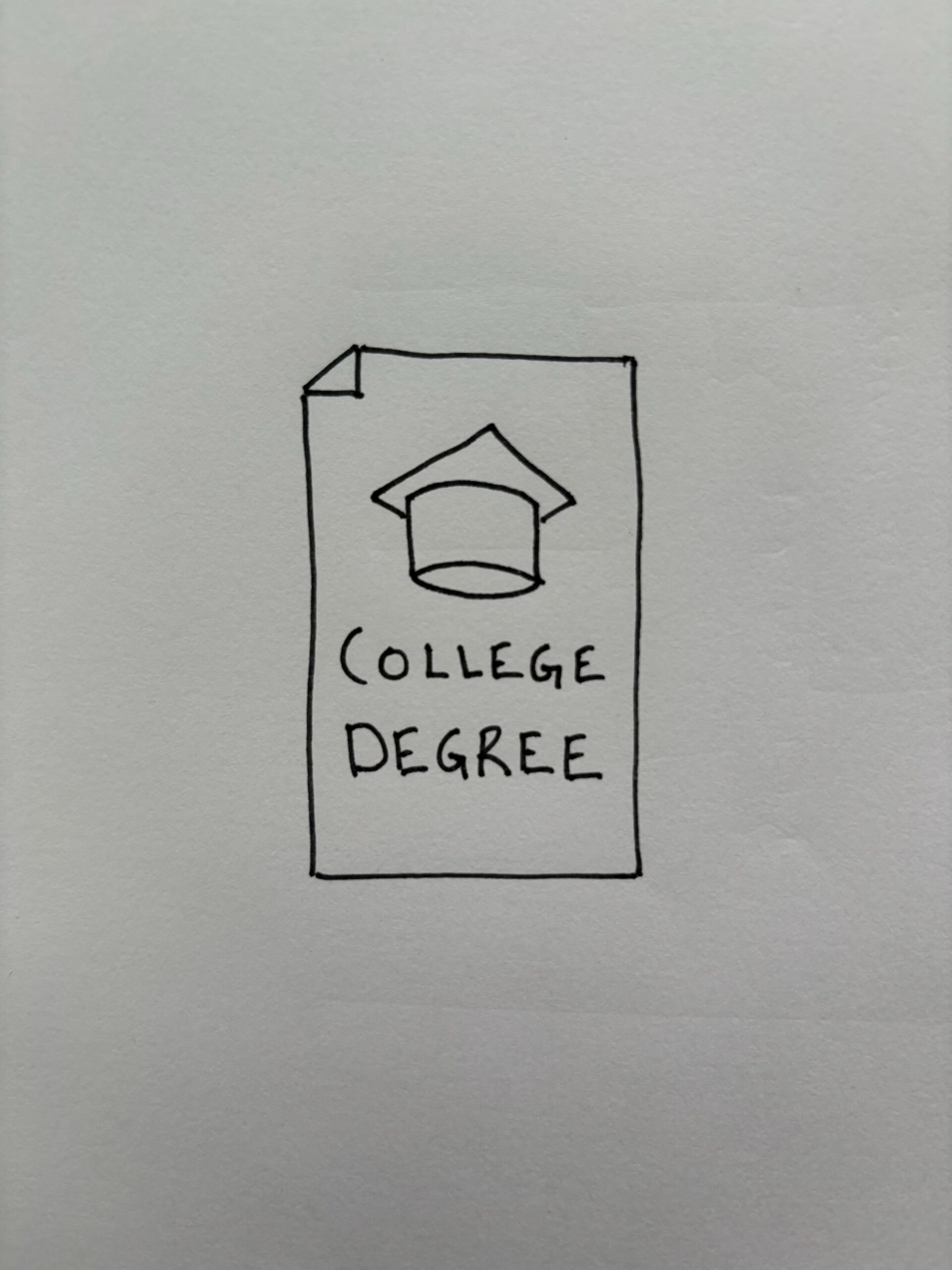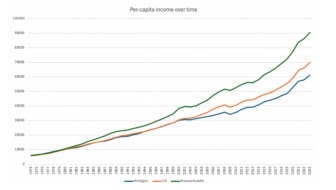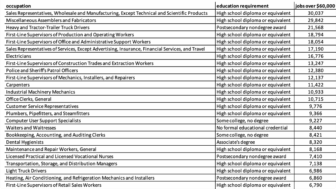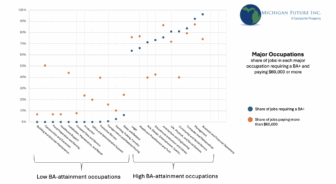Over the next several weeks, I’ll be writing a series of posts about the importance of educational attainment – both to our statewide economy and to individual economic mobility and prosperity – and how we should be designing our K-16 education system to increase the number of Michiganders who attain bachelor’s degrees.
This third post outlines the data on college attendance/completion rates in the U.S. See the links to the previous posts in this series below.
Post #1: The importance of BA attainment to a state or region’s economic development
Post #2: Educational attainment and economic well-being
In my first two posts, I outlined data showing the importance of educational attainment to the health of a state or region’s economy, and to an individual’s pursuit of economic mobility and stability. And, despite the anti-college sentiment that has emerged in some circles in recent years, college attainment has been slowly growing with each generation. Whereas 31% of U.S. adults over 65 have a bachelor’s degree or higher, and 34% of those between 45 and 64 do, the BA attainment rate shoots up to 40% for those between the ages of 25 and 44.
Despite this progress, however, there are far too many young adults who start college but fail to complete a degree. Roughly one out of every three students who enrolls directly in a four-year college after high school will not have a bachelor’s degree six years later. And though 80 percent of students who enroll in a two-year college have plans of transferring to a four-year college and completing a bachelor’s degree, just one in six actually do.
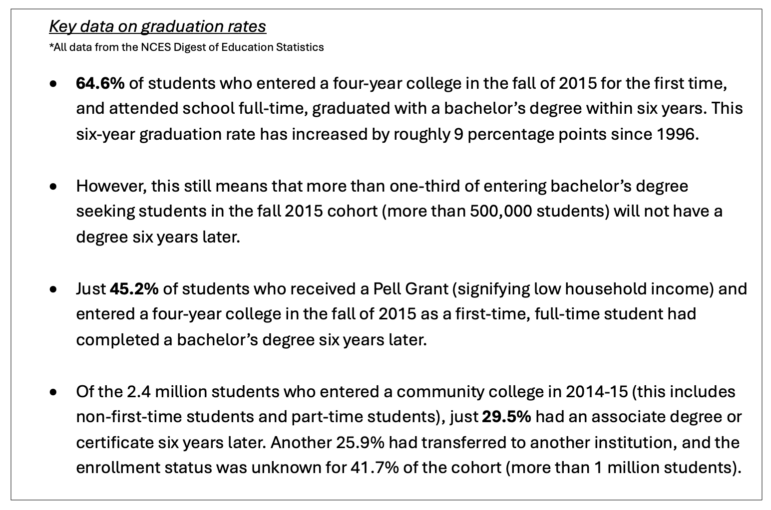
The problem of low completion rates is only magnified for low-income students: while nearly two-thirds of all full-time entering freshman at four-year colleges will complete their bachelor’s degree within six years of entry, less than half of first-time, full-time students who receive a federal Pell Grant (signifying low household income) will complete their degree within six years. Looking across all Pell Grant recipients (including those that enter a four-year college and a two-year college) just 45% complete a postsecondary credential of any kind within six years of initial enrollment, and just 20% earn a bachelor’s degree. If we look across the entire path of one’s education – from K-12, to college transition, to college completion – the odds of college completion for low-income students is that much worse. Analysis of one longitudinal survey, looking at youth born between 1979 and 1982 found that just 9% of those raised in homes in the bottom income quartile completed a four-year degree, versus 54% of those raised in top income quartile homes. There also continues to be significant racial gaps in college graduation – of those who entered a four-year college in 2015, 68% of white students and 78% of Asian students graduated in six years, versus 46% of Black students and 59% of Hispanic students.
Low completion rates are particularly troubling because the student loan “crisis” is largely centered on students who fail to graduate (for our analysis on student loans, and an explanation of why they are not as scary as how they are often portrayed, see here and here). Though media coverage around student loans tends to focus on the cumulative debt burden of American students, or on those borrowers who owe large sums, it is actually those borrowers who owe relatively small amounts who are most likely to default on their loans. Why? Because those with relatively small loan burdens tend to be those who did not complete their degree, and therefore did not receive the earnings bump that comes with a bachelor’s degree.
Completion rates at Michigan colleges
Graduation rates at Michigan’s four- and two-year institutions look much the same as the nation’s. The tables below show completion rates at Michigan’s four- and two-year institutions. The first table has the 6-year graduation rates for all four-year colleges in Michigan, both for all students and for Black students (we are highlighting the graduation rate of Black students because historically many institutions have graduated Black students at rates far lower than the rest of the student body). The second table has “150% time” completion rates (i.e., 3 year completion rates for a two-year associate degree; 1.5 year completion rates for a one year credential program) at Michigan community colleges, for all students and for Black students, as well as transfer rates. Roughly in line with national numbers, the median graduation rate at Michigan’s four-year institutions is 62%, and the median “150% time” completion rate at Michigan’s two-year colleges is 24%.

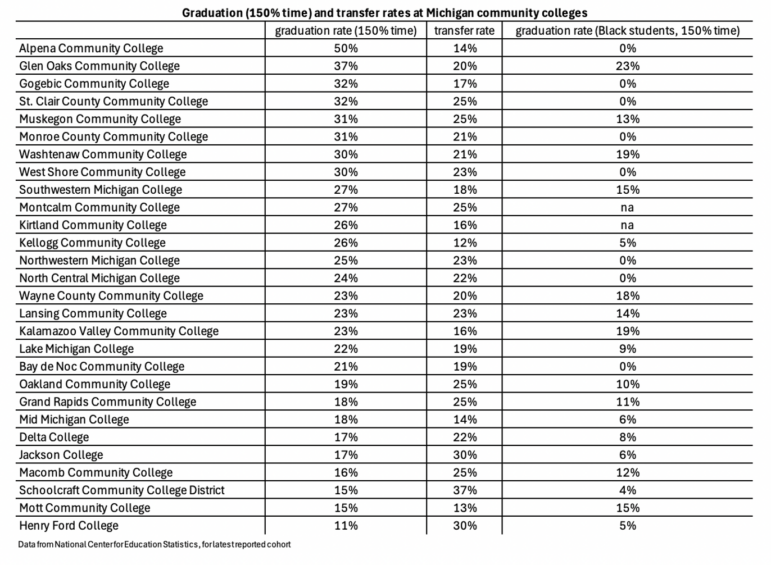
In my next post I’ll start exploring strategies for increasing completion rates at our institutions of higher education. Sneak preview: it will take more than free tuition.

